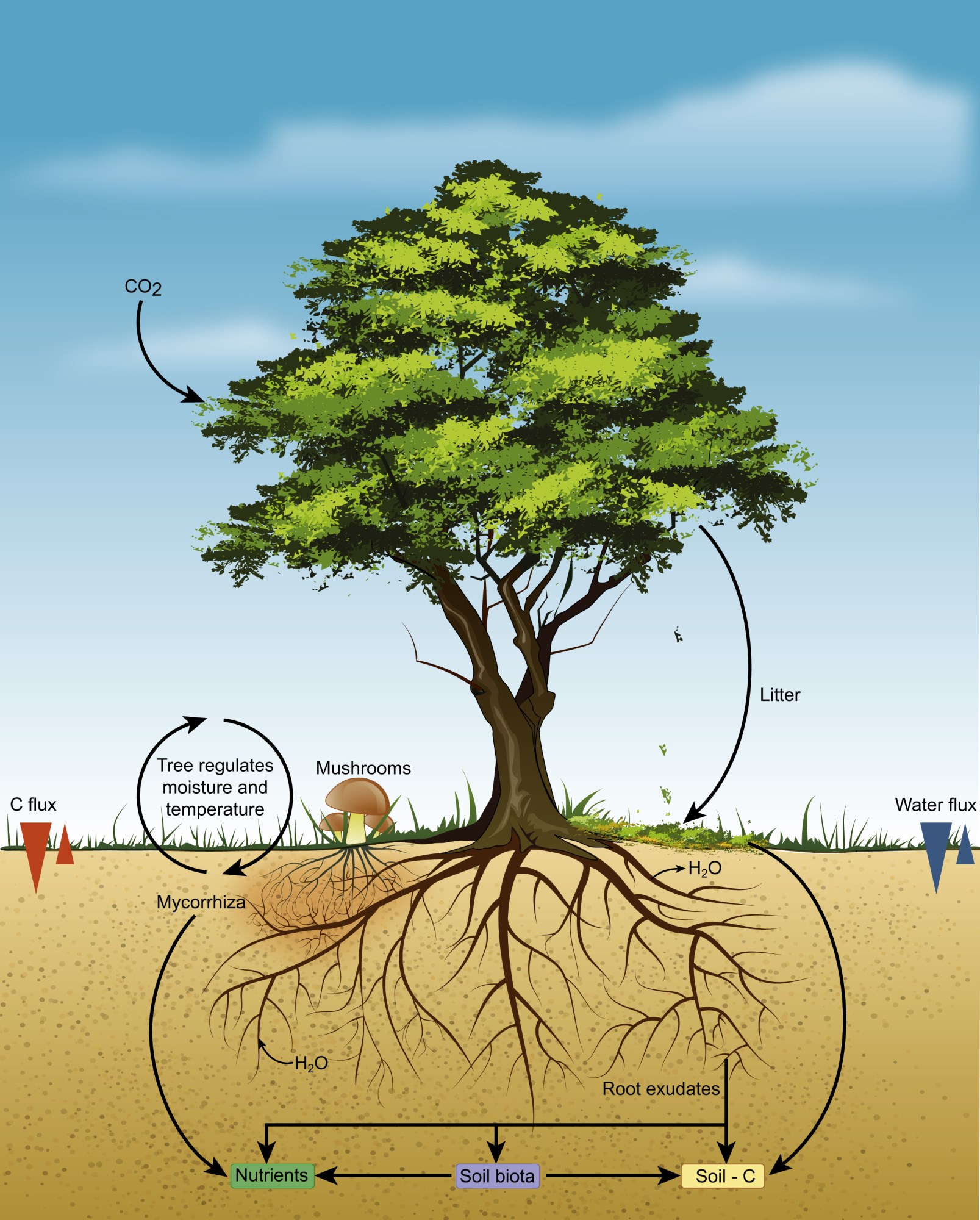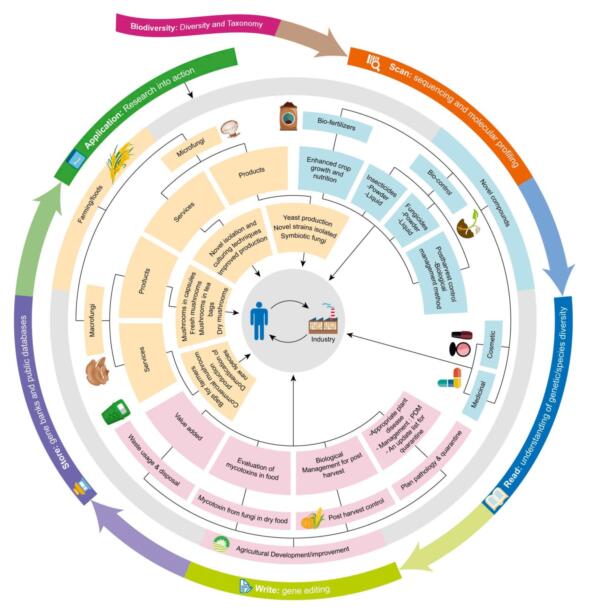
Fungi are one of the five pillars of biodiversity in the ecosystem and occupy a wide range of ecological niches.
Fungi, plants, insects, animals, microorganisms, and even other fungi compete with and are also mutually dependent upon one another. Over their long-term evolution, mutual interactions and reciprocal changes have allowed them to develop a wide array of survival mechanisms.
These unique characteristics make fungi have great promise in biotechnology and industrial exploitation.
Fungi are ubiquitous - air, water, soil, forests, plants, and animals are internally and externally replete with fungi. They are difficult to spot by the naked eye and are only perceptible once they grow fruiting bodies or mushrooms.
The latest estimates of the earth's total fungi include roughly 220 to 380 million species, of which less than 10% have been described and identified by humans. Fungi are an essential part of the ecosystem.
Fungi play an important role in the degradation of trees and other litter, providing plants with nutrients and food for invertebrates. Many large-scale fungi are eaten by humans, and mushrooms are rich in nutrients.

Figure 1. Fungi play an important role in the biodegradation, nutrient cycling, and signal transmission of an ecosystem (Image by KIB)
XU Jianchu's research team from Kunming Institute of Botany of the Chinese Academy of Sciences (KIB/CAS) has been engaged in fungal taxonomy and fungal ecology research since 2010.
Thus far, the team has discovered over 20 new genera and nearly 1000 new species. The above findings have been published in 12 relevant research papers by the first and corresponding authors in important journals such as Fungal Diversity and Study in Mycology.
Moreover, the results from the further discovery of the plastic-eating Aspergillus tubingensis were published in Environmental Pollution in 2017, which became a hot topic in global research that year and was extensively reported on by the media.
Fungi can be grown with relative ease, making them suitable for large-scale production. Research into fungal biodiversity and the creation of a living fungi collection have enormous economic potential for the development of new products and new applications.
Fungi provide drugs that are important for human health, like penicillin and lovastatin, but there are still more resources awaiting development.
Fungi provide hope for environmental pollution through the biodegradation of plastics as well as for ecological restoration through mycorrhizal technologies. They are an indispensable part of the green and circular economies. Research into fungal diversity and its industrial exploitation have already become hotspots in the field of fungal research.

Figure 2. Fungal diversity research as well as the process of industrialization: scan (sequencing and molecular profiling); read (understanding of genetics/species diversity); write (gene editing); store (gene banks and public databases); and application (research into action) (Image by KIB)
For these reasons, after a nearly two-year review of the literature, the gathering and collating of data, and a systematic analysis, XU Jianchu's research team from KIB revealed 50 ways to exploit fungi industrially in biotechnology.
Furthermore, the team cooperated with international colleagues on the case to systematically analyze the prospects for industrial exploitation and point out the direction for further fungal biotechnological research and industrial investment.
The research results were published online in the journal Fungal Diversity under the title "The amazing potential of fungi: 50 ways we can exploit fungi industrially."
This research provides research methods and ways for the industrial utilization and industrial exploitation of fungal resources, and also provides foundational material for the research of fungi in industry, medicine, agriculture, animal husbandry, forestry, and environmental protection.
This research was funded by the "Strategic Priority Research Program of Chinese Academy of Sciences."

Figure 3. Fungal industrial park relying on an integrated agroforestry and livestock ecosystem (Image by KIB)

86-10-68597521 (day)
86-10-68597289 (night)

52 Sanlihe Rd., Xicheng District,
Beijing, China (100864)

